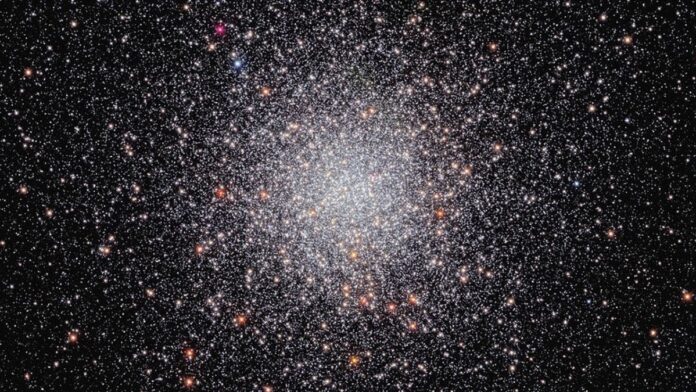A new image of deep space reveals a distant globular cluster of tightly packed stars filled with stellar bodies like a swarm of glittering bees swarming around a cosmic beehive.
The image taken by the Hubble Space Telescope focuses on the globular cluster NGC 6440 located in the constellation Sagittarius, the Archer, and a distance of around 28,000 light-years from Earth.
Globular clusters such as this generally appear on the edge of galaxies and are composed of hundreds of thousands to millions of stars separated by average distances of around one light-year.
Related: The best Hubble Space Telescope images of all time!
While the separation of a light-year may seem anything but “densely packed” consider that the closest star to the sun is Proxima Centauri which is over 4 light-years away. This is less than the average distance between stars in the Milky Way which is 5 light-years.
The stunning image is another example that Hubble can still deliver the goods despite its more powerful compatriot the James Webb Space Telescope stealing some of the limelight since it started beaming stunning space images back to Earth in July 2022.
The Hubble image of NGC 6440 which was discovered by astronomer William Herschel in 1786 is the product of five separate Hubble observing the globular cluster. Four of these programs aren’t concerned with the buzzing stellar bees of this cosmic beehive, however.
Rather they are focused on understanding far more exotic objects hidden within the globular cluster, its population of rapidly spinning neutron stars, or pulsars.
NGC 6440 is home to at least eight pulsars, rapidly rotating neutron stars with magnetic fields a quadrillion — a thousand trillion — times stronger than that of Earth, that blast out powerful beams of radiation as they spin.
Like all neutron stars, pulsars form when the cores of massive stars can no longer support themselves against the inward pressure of gravity. This results in a complete gravitational collapse that squeezes a mass around that of the sun and greater down into a width no greater than that of a city here on Earth.
This means that neutron stars are composed of the densest material in the universe, a teaspoon of which would weigh 4 billion tons, equivalent to 10,000 Empire State Buildings.
In April 2022 astronomers discovered the latest additions to this population, two new millisecond pulsars within the cluster, designated NGC 6440G and NGC 6440H.
An incredibly dense composition isn’t the only extreme characteristic of the millisecond pulsars of NGC 6440. This type of neutron star takes its name from the fact that they have rotational periods of less than 30 milliseconds. Some have even been discovered with rotational periods as great as 1.4 milliseconds. This means a millisecond pulsar can rotate between around 2000 to 43,000 times per minute.
Scientists believe these extreme neutron stars get their incredible rotational speeds when neutron stars form in binary systems and begin accreting material from a stellar companion. As this material from the donor falls onto the neutron it also accumulates angular momentum and is ‘spun up.’
The millisecond pulsars NGC 6440G and NGC 6440H in the globular cluster NGC 6440 are thought to have rotational periods of 5.22 milliseconds and 2.85 milliseconds. This means NGC 6440G rotates around 11500 times a minute while NGC 6440H spins 21050 times a minute.
Follow us on Twitter @Spacedotcom (opens in new tab) or on Facebook (opens in new tab).

